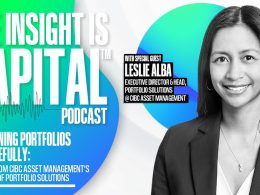Five Questions Canadian Investors Are Asking
by Scott DiMaggio and Erin Bigley, AllianceBernstein
From concerns about market liquidity to investing in clean energy, we answer the questions Canadian bond investors have been asking.
Is liquidity a challenge or an opportunity? It can be both.
Market liquidity has never been high in Canada, but its sharp decline in recent years is worrisome. Even as the provincial and corporate markets have grown, trading volume has shrunk and trading costs have risen partly because banks have reined in their risk-taking in response to heightened regulation.
We think the best way to navigate less liquid markets is to expand the opportunity set by sector and geography. Liquidity profiles vary across different bond market segments, and liquidity in any market can ebb and flow. On days when its a challenge to transact in the Canadian corporate market, the European market may be more liquid. If liquidity temporarily evaporates in US high yield, emerging-market debt may be flowing more smoothly.
This approach can even allow investors to take advantage of opportunities presented by the changing liquidity environment buying attractive assets that others are desperate to sell.
Could quantitative easing (QE) come to Canada? Not likely.
QE has been an effective tool for sputtering economies elsewhere. But Canada's situation is different. Other central banks that deployed QE – the Federal Reserve, Bank of England, Bank of Japan and European Central Bank used the tool to five effects: to stimulate growth, devalue currencies, raise inflation, boost asset prices and suppress interest rates.
Only the first two would be desirable to the Bank of Canada, which clearly wishes to stimulate growth. And while the loonie has already fallen a lot, a further decline in the currency could help competitiveness. But as far as the last three effects? The central bank is currently at its inflation target, asset prices – particularly housing – are already high, and further declines in interest rates could worsen consumers high debt loads.
If there were to be QE, we believe that it would come after the governments fiscal plan is announced and its impact on growth is assessed.
What would be the impact of tighter Fed policy? We've already seen it.
The Federal Reserve has hit the pause button on interest-rate hikes, adopting a wait-and-see attitude with respect to global growth and capital markets. But the reality is that financial conditions have already tightened as the Fed stopped growing its balance sheet.
As the Fed began to taper its bond purchases back in early 2014, its reduced liquidity provision coincided with draw-downs in numerous markets, including US high yield and emerging-market currencies. Further tightening of liquidity could continue to weigh on global markets.
But for bond investors, there's now a notable difference: they're being compensated for risk-taking with much more attractive valuations than in the past several years. That's especially true in the US corporate-bond and real-estate securitization markets, where yield spreads have widened to their highest levels in three years, making these sectors very attractive relative to Canadian bonds.
Am I right to worry about idiosyncratic, or issuer-specific, risk? Yes.
Concentrating too much of a bond portfolio in a single issuer is more dangerous in bond portfolios than in stock portfolios. A bonds upside potential is capped at par value plus accrued interest. As a result, its virtually impossible to make up for a wrong call on a bond. If you lose a lot of money on one bond, youre not going to get an opportunity to win it back with another bond.
For this reason, diversification is always important in a bond portfolio. And there are times when idiosyncratic risk is especially high. That's the case today, given how late we are in the credit cycle. Not only are overall defaults on the rise, but many issuers in the high-yield energy sector are becoming distressed.
To make matters worse, getting proper diversification can be difficult in the Canadian corporate market, where there are fewer than 100 issuers, and where the 10 largest issuers comprise more than half of the market.
The solution? Just as with liquidity challenges, we believe in diversifying globally to tap into hundreds of different issuers, as well as into industries that are tiny or nonexistent in Canada, such as tech and consumer non-cyclicals.
Are green bonds a fad or the future? The future.
Green bonds help issuers raise money for environmentally friendly projects such as clean energy. Issuance was roughly $40 billion in 2015 and is expected to be even higher this year. Importantly, from a diversification standpoint, issuers hail from a wide range of countries, not just Canada.
There are some drawbacks: liquidity, though it has been improving, is generally lower in the green-bond market than in the traditional corporate-bond market. Valuations can also be a challenge, with green bonds trading at higher prices than similar non-green bonds from the same issuer. There's also been some difficulty around what constitutes green use of proceeds. But were encouraged to see more organizations embrace the Green Bond Principles and sign onto the Climate Bond Initiative, which aims to create a climate-bond certified designation.
The green-bond market is poised for growth as global climate policies align and as demand from investors continues to accelerate.
The Way Forward
If there's a common theme here, its finding better, more flexible ways to diversify. A global, multi-sector approach lets investors tap into a broad universe of fixed-income assets. Such an approach makes liquidity and idiosyncratic risks more manageable and serves up many more opportunities for managers to add value.
The views expressed herein do not constitute research, investment advice or trade recommendations and do not necessarily represent the views of all AB portfolio-management teams.
Director - Global Fixed Income and Director - Canada Fixed Income

Scott DiMaggio serves as Director of both Global Fixed Income and Canada Fixed Income, and is a member of the Absolute Return portfolio management team. Prior to joining the Fixed Income team, he performed quantitative investment analysis, including asset-liability, asset-allocation, return attribution and risk analysis. Before joining the firm in 1999, DiMaggio was a risk-management market analyst at Santander Investment Securities. He also held positions as a senior consultant at Ernst & Young and Andersen Consulting. DiMaggio holds a BS in business administration from the State University of New York, Albany, and an MS in finance from Baruch College. He is a member of the Global Association of Risk Professionals and a CFA charterholder. Location: New York
Senior Portfolio Manager - Fixed Income
Erin Bigley was named a Senior Portfolio Manager for the Fixed Income team in 2008 and is a member of the firms Responsible Investment Committee. She joined the firm in 1997 and previously served as a portfolio manager and trader for the Global and Canadian bond strategies. Bigley also spent two years based in London as the global head of Fixed Income business development for institutional clients. She is the co-author of LDI: Reducing Downside Risk with Global Bonds, published in The Journal of Investing. Bigley holds a BS in civil engineering from Villanova University and an MBA from the Massachusetts Institute of Technology's Sloan School of Management. She is a CFA charterholder. Location: New York
Related Posts
Copyright AllianceBernstein












